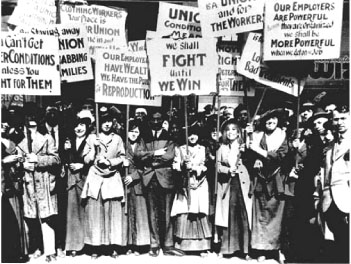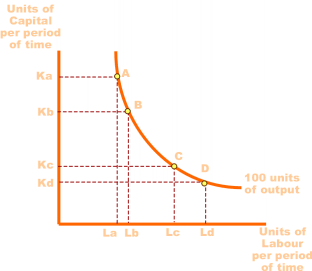President Obama suggested increasing the minimum wage to $9 an hour. There is no guarantee that the Congress will approve this request once it is officially made by the White House. The US minimum wage was $1.60 in 1968 while it is currently $7.25 , almost five times as much. So why is president Obama and so many others concerned about raising it some more? I am sure that all of you realize that what counts is not the nominal wage but the real one. This simply means that the $1.60 of 1968 is equivalent to $10.53 in 2012 dollars. So as you can see the minimum wage in the US has been declining over the years instead of either increasing or ,at a minimum, maintain its purchasing power. The following is a short article by Ralph Nader that speaks to the issue of minimum wage and where it should be.
******************************************************************************
Published on Saturday, February 16, 2013 by
How could Barack Obama say, in his State of the Union speech,
“let’s declare that in the wealthiest nation on earth no one who works
full-time should have to live in poverty, and raise the federal minimum
wage to $9.00 an hour”?Nine Bucks an Hour? A Call for a Living Wage at $10.50 or More
Back in 2008, Obama campaigned to have a $9.50 per hour minimum wage by 2011. Now he’s settling for $9.00 by 2015! Going backward into the future is the price that poverty groups and labor unions are paying by giving Mr. Obama a free ride last year on this moral imperative. How can leaders of poverty groups and unions accept this back-of-the-hand response to the plight of thirty million workers who make less today than what workers made 45 years ago in 1968, inflation adjusted?
But, of course, the poverty groups and labor unions chose not to mobilize some of the thirty million workers who grow our food, serve, clean up and fix things for us to push for a meaningful increase in the minimum wage before Election Day.
It gets worse. The Obama White House demanded “message discipline” by all Democratic candidates. That meant if Obama wasn’t talking about raising the minimum wage to catch up with 1968, none of the other federal candidates for Congress should embarrass the President by speaking out, including Elizabeth Warren, of all people, who was running for the U.S. Senate from Massachusetts.
Catching up with a 1968 federal minimum wage of $10.50, inflation adjusted, should be a winnable goal this year. Once the media starts regularly reporting on the human consequences of unlivable wages, and once the entry of more and more of the thirty million workers to marches, rallies and town meetings grows, neither the Republicans nor the Blue Dog Democrats will be able to stop this drive.
It didn’t matter that the U.S. had the lowest minimum wage of any major western country (Australia is over $15, France over $11, and the province of Ontario in Canada is $10.25 – all of these countries also have health insurance for all).
It didn’t matter that several cities and 19 states plus the District of Columbia have higher minimums, though the highest – Washington state – reaches only to $9.19.
It didn’t matter that two-thirds of low-wage workers in our country work for large corporations such as Walmart and McDonald’s, whose top CEOs make an average of $10 million a year plus benefits. Nor did it matter that these corporations that operate in Western Europe, like Walmart, are required to pay workers there much more than they are paying Americans in the United States where these companies got their start.
Haven’t you noticed how few workers there are in the “big box” chain stores compared to years ago? Well, one Walmart worker today does the work of two Walmart workers in 1968. That is called a doubling of worker productivity. Yet, many of today’s Walmart workers, earning less than $10.50 an hour, and are making significantly less than their counterparts made in 1968.
Nobel-Prize-winning economist Joseph Stiglitz, told me that minimum wage policy relates intimately to child poverty. Single moms with children on a shrinking real minimum wage “translates to child poverty” and is “creating another generation” of impoverished people.
The arguments for a higher minimum wage, at least to reach the level of 1968, are moral, political and economic. James Downie writing in The Washington Post provided five reasons to raise the minimum wage: “1) it will help the economy; 2) it reduces poverty and inequality; 3) it reduces the ‘wage gap’ for women and minorities; 4) indexing the minimum wage is, well, common sense; and 5) it’s consistent with American values.”
Downie gives historical perspective on just how far our economic expectations have slid when he quotes Theodore Roosevelt at the 1912 Progressive Party convention:
“We stand for a living wage…enough to secure the elements of a normal standard of living – a standard high enough to make morality possible, to provide for education and recreation, to care for immature members of the family, to maintain the family during periods of sickness, and to permit a reasonable saving for our old age.”
In the ensuing 100 years, worker productivity has increased about twentyfold. Why then are not most workers sharing in the economic benefits of this productivity? With other worker advocates, we chose to demonstrate on Feb. 12, 2013 before the headquarters of the U.S. Chamber of Commerce whose business coalition opposes increases in the minimum wage while its members report record profits and boss pay. And before the headquarters of the large labor federation – the AFL-CIO – we urged well-paid union leaders to devote more of their power and resources on Congress and the White House to lift up the minimum wage for those they like to call their “brothers and sisters,” from the ranks of the working poor.
The last time – 2007 – a higher minimum wage law was passed under the prodding of the late Senator Edward Kennedy, nearly 1,000 business owners and executives, including Costco CEO Jim Sinegal, the U.S. Women’s Chamber of Commerce CEO Margot Dorfman (two thirds of low-income workers are women), and small business owners from all 50 states signed a “Business for a Fair Minimum Wage” statement.
It read: “[H]igher wages benefit business by increasing consumer purchasing power, reducing costly employee turnover, raising productivity, and improving product quality, customer satisfaction and company reputation.”
Listen to those words, Walmart! You badly need to improve your reputation, given your recent major missteps.
Catching up with a 1968 federal minimum wage of $10.50, inflation adjusted, should be a winnable goal this year. Once the media starts regularly reporting on the human consequences of unlivable wages, and once the entry of more and more of the thirty million workers to marches, rallies and town meetings grows, neither the Republicans nor the Blue Dog Democrats will be able to stop this drive. Congressional districts all have many such workers in their districts and polls show 70 percent popular support for raising the minimum wage. That includes millions of workers who call themselves conservatives.
The April Congressional recess – the first two weeks of the month – will be the first opportunity to show up where it counts – at the town meetings held by senators and representatives back home. Filling those seats usually requires two to three hundred local voters. If workers rally, by the time the lawmakers go back to Congress, they’ll have a strong wind to their back to face down the lobbies for greed and power, who have money, but don’t have votes.
Check out our website timeforaraise.org and join this long overdue initiative.









